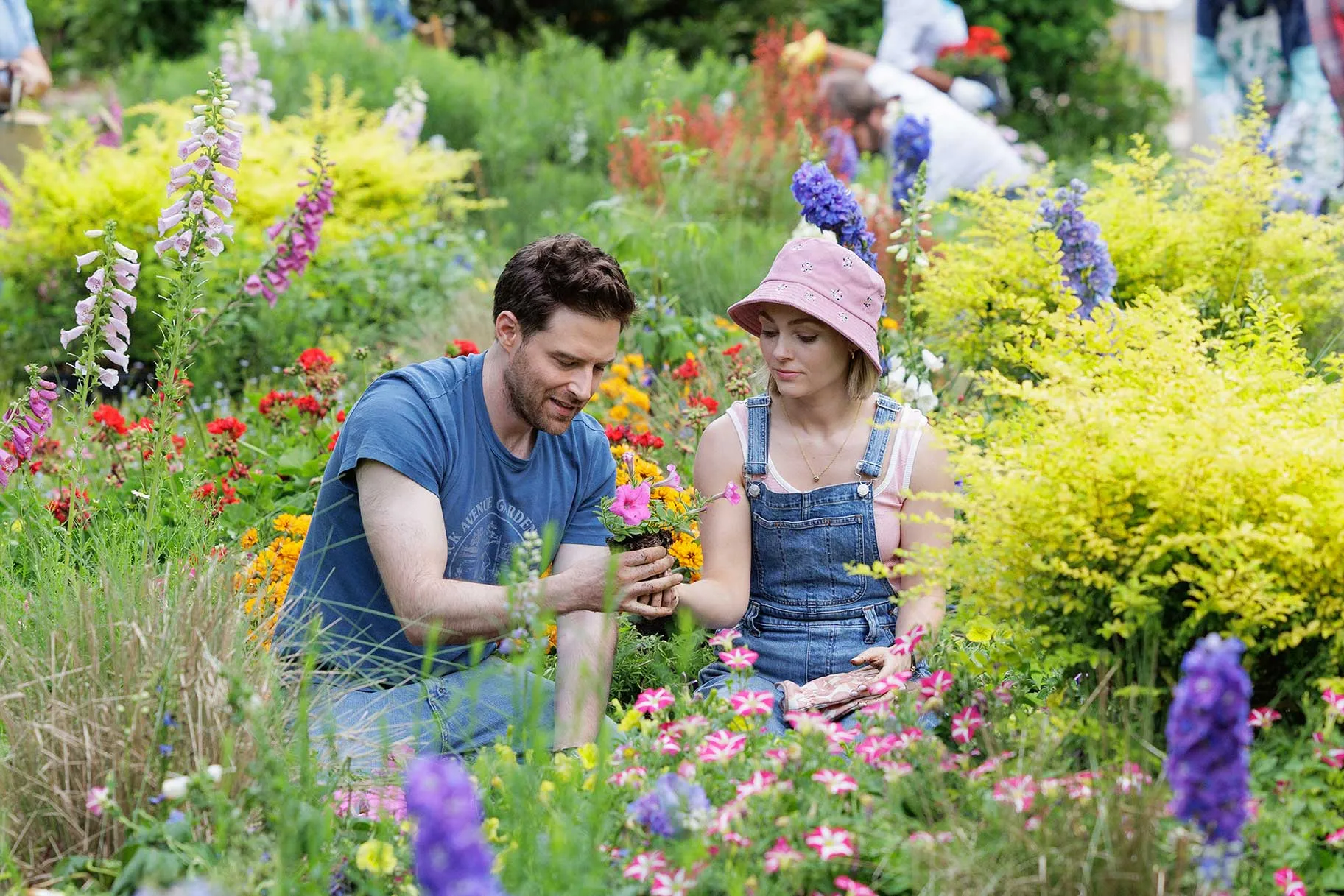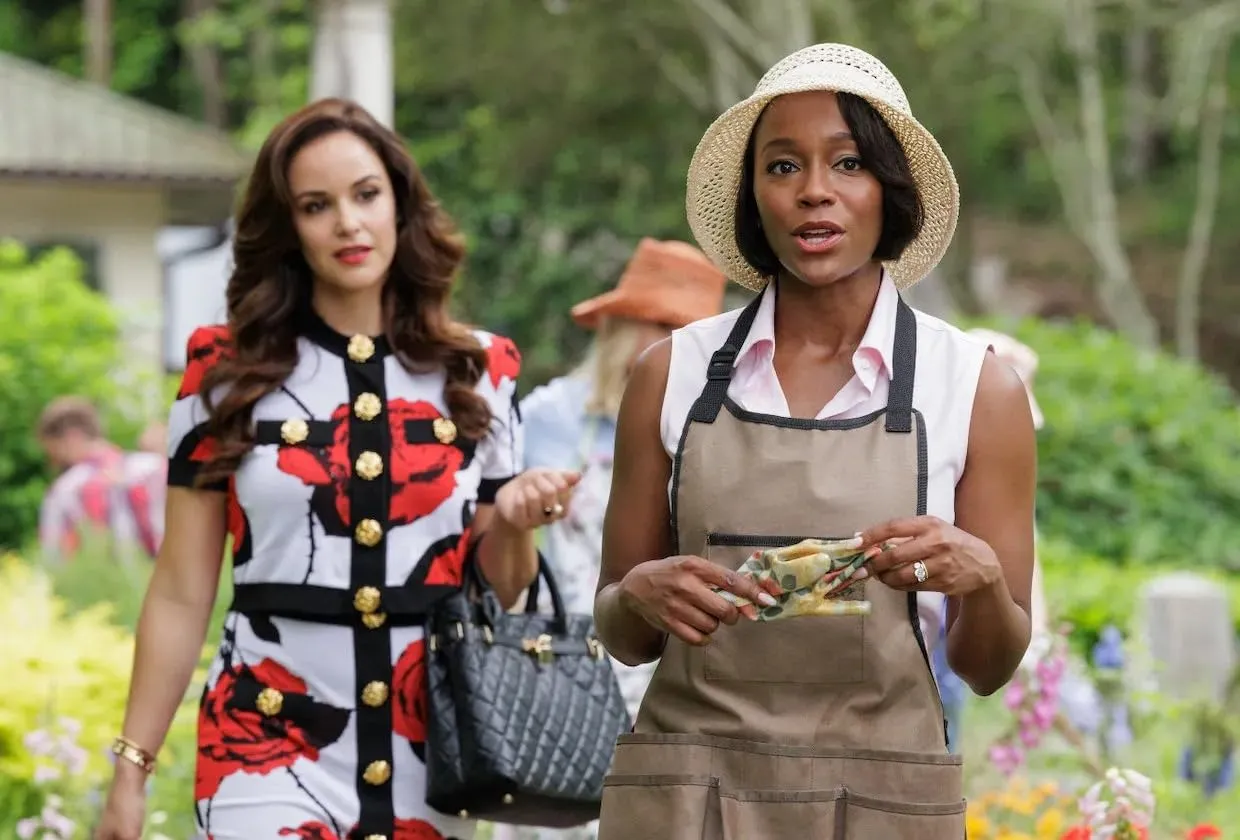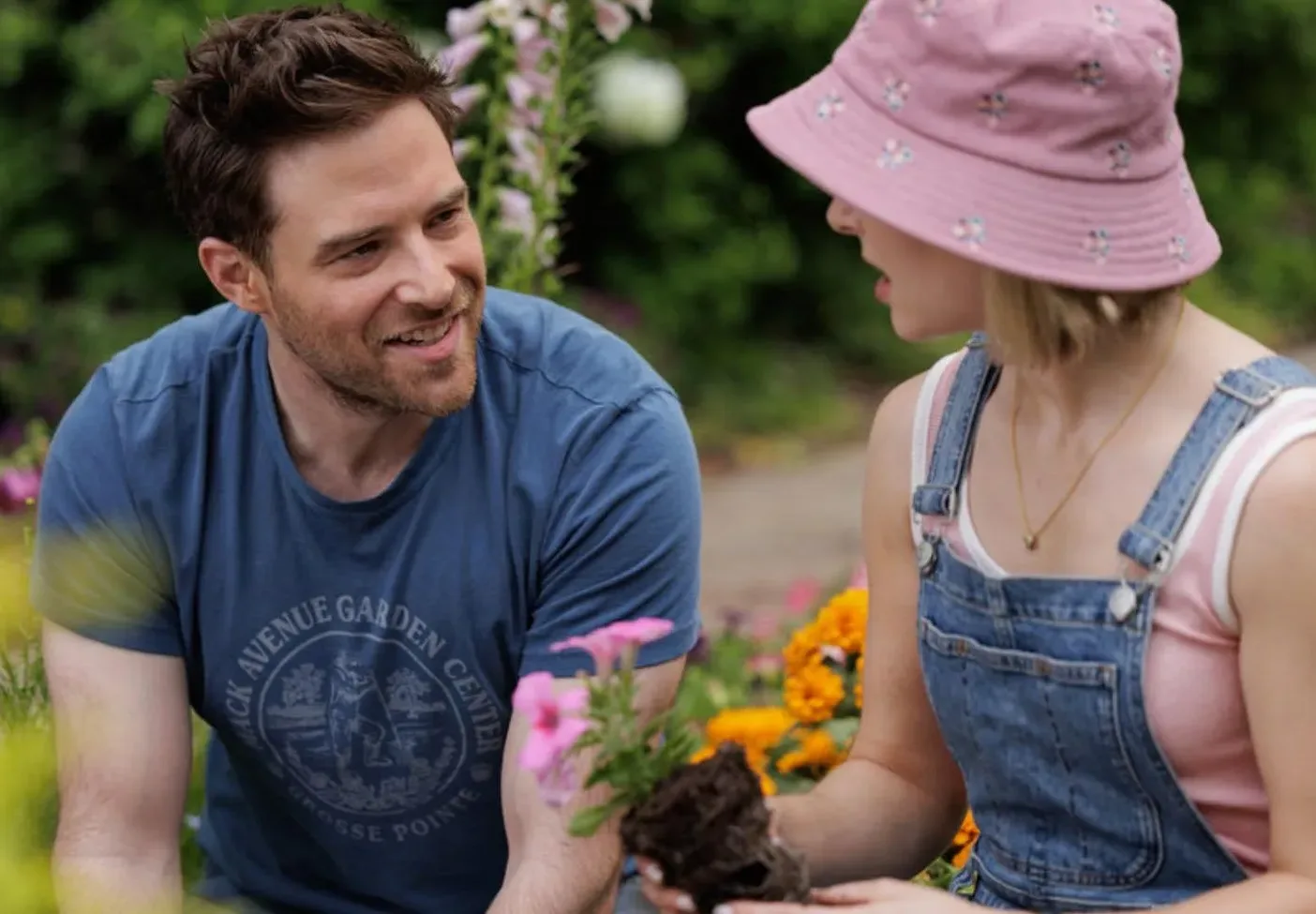In the manicured lanes of Grosse Pointe—a polished enclave on the fringes of Detroit—the series unfolds its tale of suburban secrets. A garden club, where every neatly trimmed hedge hides a concealed truth, becomes the unexpected arena for a murder mystery that prickles the conscience as much as it tickles the fancy.
The narrative oscillates between two distinct epochs: a present marked by the fallout of a clandestine crime and a flashback from six months prior that gradually exposes the characters’ concealed motives (a structure that reminds one of historical serialized dramas, where the slow reveal was an art form).
The inciting moment—a body quietly interred beneath a bed of roses—acts as a catalyst for a cascade of dramatic events. This initial hook invites viewers to examine the hidden fissures within a seemingly impeccable society, challenging assumptions and inviting both amusement and reflection.
Threads of Suspense: Unraveling the Narrative
The murder mystery plot in this series unfolds like a slow-burning enigma—a series of well-placed secrets that ripple outward, influencing each character’s life in unexpected ways.
The narrative follows an almost ritualistic progression, with the initial concealment of a body setting off a cascade of events that challenge the viewer to piece together a puzzle (one might even call this a “clue-cascade”). The storyline builds tension by scattering hints across episodes, gradually revealing the characters’ hidden agendas and past misdeeds, which, in turn, shape their present predicaments.
The narrative employs a dual timeline structure, oscillating between a present marked by the repercussions of a long-held secret and flashback sequences from six months earlier that slowly cast light on the mystery. Title cards and a deliberate use of color-coding serve as visual signposts (almost like breadcrumbs) that help the audience distinguish between these temporal layers. This technique, while reminiscent of certain serialized classics, offers a fresh twist by underscoring the disconnect between appearance and reality in a society that prizes surface perfection.
Pacing here is a study in contrasts. Moments of rapid, almost breathless tension are interspersed with scenes that invite quiet reflection on the characters’ inner lives. Suspense is carefully constructed through a measured withholding of key details—most notably, the identity of the murder victim remains shrouded in ambiguity.
At times, the story’s deliberate tempo can feel both artful and exasperating (a duality that might echo the complexities of historical narratives where truth is as elusive as it is inevitable). Each episode serves as a chapter in a larger, evolving narrative that challenges the viewer to question the interplay between fate and free will in a setting where nothing is as it seems.
Faces Behind the Facade: Character Analysis and Ensemble Dynamics
The series presents a quartet of characters whose lives intertwine in ways that provoke reflection on modern identity and societal roles. Birdie, portrayed by Melissa Fumero, emerges as a socialite whose forced community service becomes a crucible for unexpected self-discovery.
Initially, her image as a carefree party figure is undermined by subtle hints of inner fragility—an evolution that adds a surprising twist to what might have been a shallow caricature (imagine a celebrity learning that glitter can also hide cracks). Her storyline touches on themes of responsibility and the unexpected costs of privilege.
Alice, brought to life by AnnaSophia Robb, occupies a more conflicted space. As a high school teacher, her ambition to reinvent herself clashes with the demands imposed by her familial and marital obligations. Her narrative is a study in personal compromise; the tension between following one’s inner voice and adhering to external expectations is rendered with a quiet intensity that speaks to a universal dilemma (one that echoes certain historical figures who struggled to redefine themselves amid rigid social mores).
Catherine, portrayed by Aja Naomi King, navigates a dual existence marked by an impeccable public demeanor that conceals turbulent private affairs. Her clandestine romantic entanglement, set against a backdrop of personal and professional pressures, forces her to negotiate an identity that is constantly under scrutiny. The series uses her character to challenge the notion of perfection in polished suburban life, revealing the costs of maintaining an unblemished exterior.
Brett, played by Ben Rappaport, stands apart as the lone male presence among the four. His narrative, revolving around co-parenting and reflections on past relationships, offers a contrasting perspective on the challenges faced by the group. His interactions with the others provide moments of levity and a subtle critique of the often one-dimensional roles assigned to male characters in similar settings.
The chemistry among these figures is a study in balance. There are scenes charged with genuine warmth—a shared laugh, a look of mutual understanding—that contrast sharply with moments of simmering discord and betrayal. The interplay of these elements brings forth a dynamic that is both relatable and ripe for analysis.
Romantic entanglements, interlaced with friendships that verge on intimacy, enrich the narrative tapestry, giving each character space to evolve. At times, their connections spark unexpected conflicts, hinting at the unpredictable nature of human relationships in any tightly knit social circle. This careful layering of personality and emotion invites the audience to reflect on the intricate web of personal aspirations, missteps, and reconciliations that shape contemporary life.
Cultivating the Underbelly of Suburbia
The portrayal of an affluent suburban community is rendered with a meticulous irony. Behind manicured lawns and spotless driveways lies a mosaic of suppressed desires and concealed scandals—a society where the pressure to maintain an impeccable image becomes a gilded cage with hidden hinges. Every well-tended rose bush and precisely trimmed garden bed acts as a symbol of aspirations held captive by societal dictates and the slow decay of what appears pristine.
Gardening imagery emerges as a potent symbol throughout the narrative, representing both the nurturing of potential and the inevitable onset of decay. A carefully pruned flower might mirror an individual’s ambition, restrained by rigid expectations, while an untended weed hints at secrets ready to burst forth unexpectedly (reminding one of the unruly elements that have disrupted even the most ordered historical eras). This metaphor not only enriches the visual storytelling but also ties the narrative to longstanding cultural discussions about domesticity and the tension between order and chaos.
Characters in the series grapple with the tug-of-war between personal desires and the uncompromising norms imposed by their community. Their internal conflicts, especially regarding traditional gender roles and generational pressures, mirror debates seen in past social movements.
At moments, the narrative offers a blend of sharply humorous interludes and moments of sober reflection—a microcosm of life’s inherent contradictions. These thematic layers invite viewers to question the high cost of perfection and the inevitable fallout when reality begins to crack the surface of a flawlessly cultivated facade.
Visual Aesthetics and Ambient Undertones
The series employs a visual style that transforms every scene into a study of contrast. The meticulously manicured gardens serve not merely as backdrops but as active symbols, their pristine order clashing with the jarring flashbacks rendered in stark, altered hues.
Title cards punctuate the narrative, their crisp design and distinctive color filters marking shifts between temporal layers—a visual shorthand that sharpens the unfolding mystery (a sort of cinematic Morse code).
The tone oscillates between earnest melodrama, subtle humor, and an undercurrent of enigma. The production design fashions a world where the surface allure of affluence hides imperfections beneath. A carefully composed shot of a sunlit hedge may, in the next moment, be subverted by a murky, off-kilter sequence, hinting at a decay that underpins the characters’ lives.
Grosse Pointe itself functions almost as a living, breathing entity. Its picture-perfect streets and manicured facades are at odds with the concealed truths harbored by its residents. This setting not only intensifies the narrative tension but also mirrors a societal preoccupation with appearance and the often-unspoken costs of maintaining a flawless exterior.
Narrative Alchemy: The Art of Unspoken Craft
The writing in this series is an eclectic mix of witty banter and moments that border on the absurd, occasionally tipping into humor that might be seen as awkward (a kind of narrative self-parody) yet always paired with genuine dramatic depth. Dialogue is not merely conversational filler; it serves as a window into character quirks and hidden motivations, pushing the plot forward with each carefully chosen phrase.
Directorial choices play a significant role in the unfolding story, where flashbacks and flash-forwards are handled with a deliberate, almost surgical precision. The pacing alternates between rapid-fire revelations—scenes that crackle with urgency—and quieter intervals that allow viewers a moment of reflection, as if the narrative itself is pausing to catch its breath. This deliberate tempo creates a rhythmic tension that mirrors the uncertainties of real-life events (historical episodes often possess a similar cadence).
The series also employs a range of symbolic devices, with gardening imagery frequently resurfacing as a metaphor for personal growth and inevitable decay. Strategic withholding of key details further intensifies suspense, inviting the audience to engage in a kind of “clue alchemy” as they decode the layered narrative.
Future Horizons and Lingering Curiosities
The series presents a strong setup with an engaging premise, a multi-layered narrative, and a cast that conveys character depth through every exchange. Its storyline, marked by intertwined personal dilemmas and hidden transgressions, prompts viewers to question the price of maintaining flawless appearances in a polished suburban environment.
There are clear indications that the creators have built a framework allowing further refinement; the current mix of rapid disclosures and quieter intervals hints at evolving rhythm in upcoming episodes (a sort of narrative recalibration).
Looking ahead, character arcs seem poised to shift toward more introspective conflicts, potentially extending the mystery into realms that reflect the intricacies of modern social relationships.
The interplay between established motifs and emerging stylistic experiments suggests that future installments might reexamine both personal and communal cost structures. These narrative adjustments, if handled with a balanced touch, could spark discussions that reach beyond television screens into wider cultural debates.
The Review
Grosse Pointe Garden Society Season 1
Grosse Pointe Garden Society is a thought-provoking exploration of suburban facades and hidden depths. It combines a layered narrative with keen symbolic imagery and memorable characters, inviting viewers to question the price of perfection. While its pacing can occasionally falter and some ambitions remain unfulfilled, its intelligent dialogue and distinctive visual style make it a noteworthy, if uneven, contribution to the genre.
PROS
- Intriguing premise with a layered narrative structure
- Strong ensemble cast and standout performances
- Impressive visual aesthetics and symbolic imagery
CONS
- Inconsistent pacing in certain episodes
- Occasional dialogue that may feel forced
- Some character arcs remain underdeveloped





















































